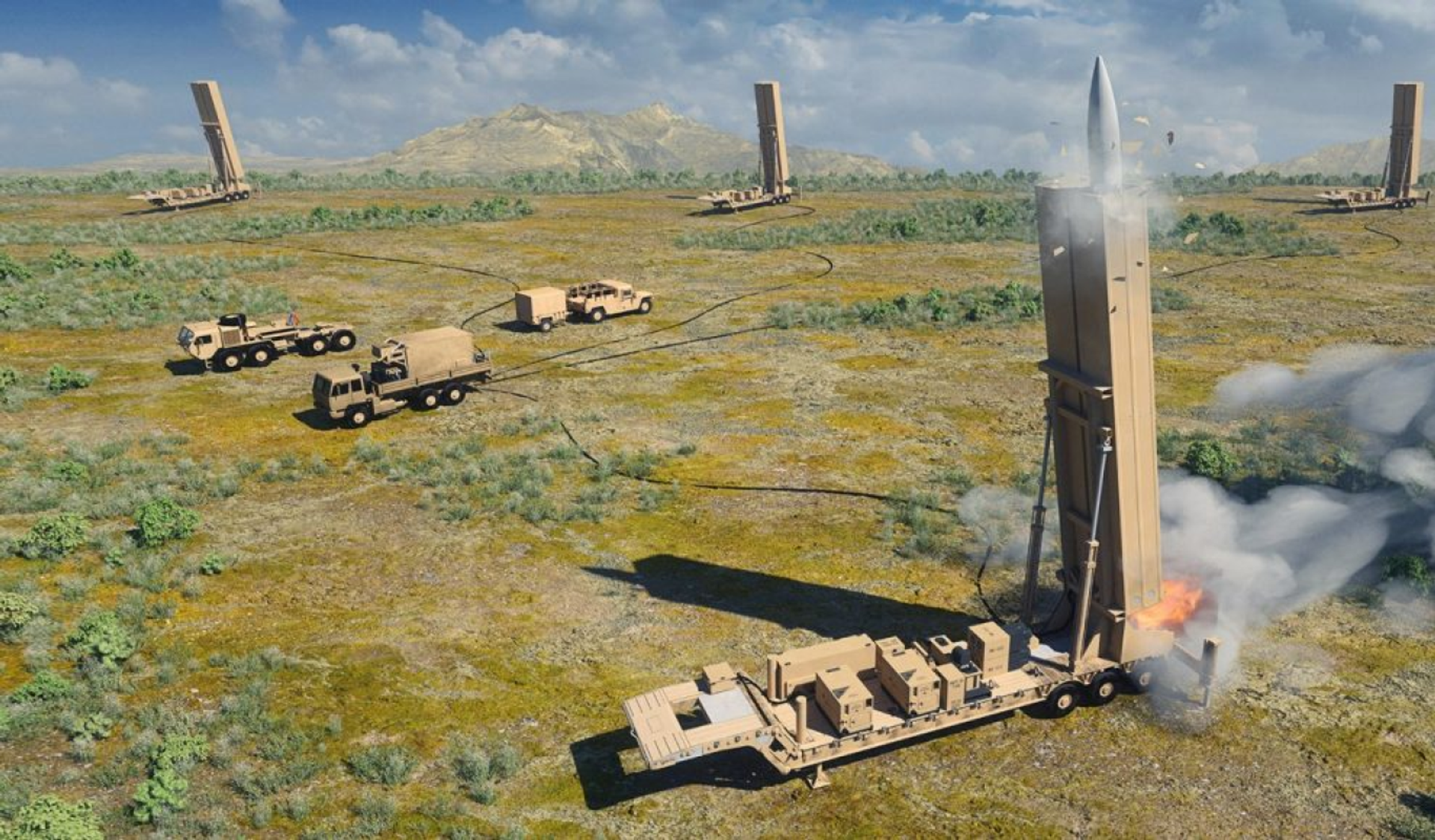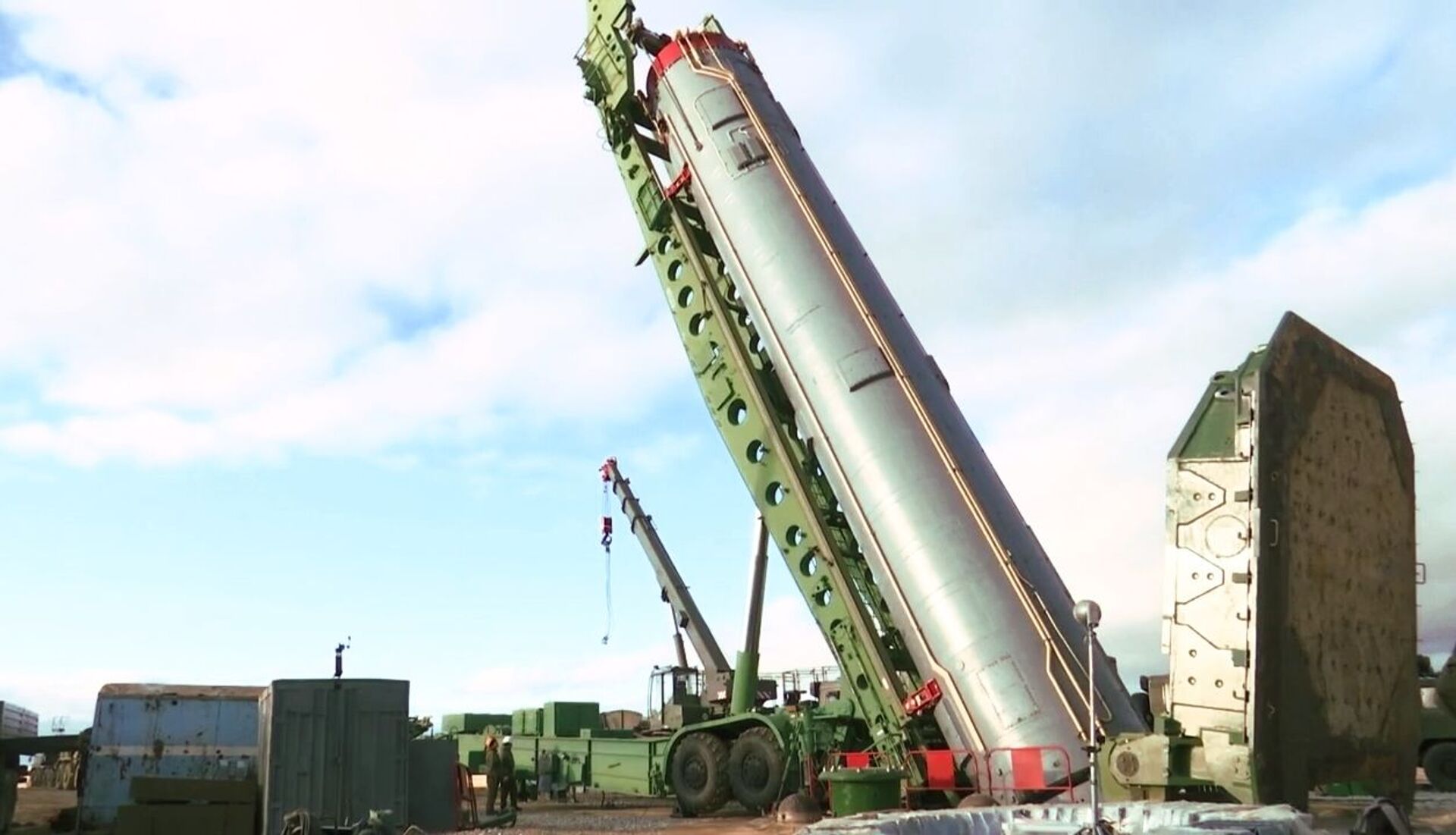‘Huge Barriers’: Pentagon’s Hypersonic Woes Due to ‘Very Delicate’ Physics Problems Behind Tech

© Lockheed Martin
Subscribe
Hypersonic technology is highly specialized, and military engineers have to overcome serious challenges posed by physics that disrupt the typical way missiles are used. This is why the US military has struggled to catch up to Russia, China, and other nations that have already developed the technology, experts told Sputnik.
US media reported on Thursday that the Pentagon had postponed testing of its Long-Range Hypersonic Weapon (LRHW) a day prior, based on “pre-flight checks.” The test was to take place in Florida, with the weapon fired eastward into the Atlantic Ocean.
The LRHW is a surface-launched weapon initially intended to be deployed with the US Army later this year and fired from a Transporter-Erector-Launcher (TEL) like a ballistic missile. Another version is later planned for deployment on naval warships like the Zumwalt-class cruiser, which have already begun the refitting process for carrying the weapons.
The scrubbed test comes after repeated failures to fire the Air-Launched Rapid Response Weapon (ARRW), an air-launched ballistic missile with a hypersonic glide vehicle that has only had one successful test - late last month. Another weapon, the scramjet-powered Hypersonic Attack Cruise Missile (HACM), is also in development but with no predicted time to enter service.
Hypersonic speed is that beyond Mach 5, or roughly 3,800 miles per hour. It is much faster than any existing aircraft or missile, except for space-bound rockets seeking to break from Earth’s gravitational pull.

Concept art by Lockheed Martin of deployment of a battery of its Long-Range Hypersonic Weapon (LRHW)
The US has lagged behind countries like Russia, which was the first to introduce hypersonic weapons as a response to US air defense systems that greatly exceeded the parameters of the defunct Anti-Ballistic Missile (ABM) Treaty, and China, both of which have several types of hypersonic weapons in service.
Sputnik spoke with two military technology experts to find out why the US is behind.
Konstantin Sivkov, corresponding member of the Russian Academy of Rocket and Artillery Sciences, Doctor of Military Sciences, pointed out that the technology behind hypersonics is both old and new.
“What is a hypersonic weapon? It allows you to hit targets using homing in the final stage and at the same time fly at hypersonic speed,” he summarized to Sputnik.
“Many ballistic missiles that appeared in the world as intercontinental ones back in the 1950s also have hypersonic speed, but they do not maneuver on their flight path - but this is not the case for hypersonic weapons.”
“The Americans cannot solve two problems: providing control over the flight of missiles at hypersonic speeds - that is, maneuvering - and the issue of ensuring the operation of targeting systems at hypersonic speeds.”
Dmitry Drozdenko, a military analyst and chief editor of the “Fatherland Arsenal” internet portal, told Sputnik that the LRHW was similar to Russia’s Avangard hypersonic weapon, which was the first to be announced in 2019.

An intercontinental ballistic missile of the Avangard strategic missile system being installed in a silo in the Orenburg region.
© Sputnik / Ministry of Defense of the Russian Federation
/ “That is, there is a standard container in which the rocket engine accelerates the warhead-laden glider up to a certain height and to hypersonic speed. At that point, it begins to maneuver in the atmosphere without an engine. The only difference is that our Avangard has a global strike capability: it can strike at the South or North Pole, even in Washington, even in Canberra - anywhere on the planet, with both nuclear and non-nuclear payloads.”
Drozdenko explained the US has struggled to develop a usable hypersonic weapon because hypersonic technology is “subtle in the field of fundamental science.”
“It is a very delicate topic,” he told Sputnik.
“Once upon a time there were problems with supersonic, if you remember the old stories, when the first jet aircraft had straight wings and propellers, and then they began to be made with wings angled back. It's all related to the fact that when approaching the speed of sound, a shockwave occurs, which does not allow an effective increase in speed. Therefore, the wings were deflected back and this shockwave flowed back at supersonic speed.”
“So at hypersonic speeds, physical phenomena also arise. That is, there are several barriers such as high temperatures - very high. The vehicle heats up a great deal. If we are talking about [Russia’s] Avangard, it heats up to the state of plasma” similar to a spacecraft’s reentry into Earth’s atmosphere, which also travels at hypersonic speed, he explained.
“The protective layer burns away as a result. The astronaut is not damaged, but at that moment the communication connection is lost. That is, it is a known fact that when they enter the atmosphere, radio communication is lost, because radio waves do not pass through the plasma.”
“And here questions of control arise: a hypersonic weapon that flies for a long time at such speeds must, firstly, be refractory. That is, it should not burn out, otherwise it will not fly,” he said, adding that “This is a matter of materials science - maintaining high temperatures.”
This, Drozdenko noted, was a key difference between reentry vehicles and hypersonic weapons: they have to be controlled and maneuvered, not just allowed to “ram the atmosphere with their belly” until they slow down.
“The task of hypersonic weapons like Avangard is to maneuver. This is the most important thing, so that air defense systems can neither detect it nor shoot it down. It needs a control system that can somehow analyze the external environment despite being in this plasma cloud. There is a whole complex of fundamental theoretical sciences - materials science, aerodynamics of high speeds - which current control systems and radio electronics do not have. This is a huge barrier.”
That is why, Drozdenko noted, such technology has been highly classified - and why it’s been a major target for American spycraft in recent years.

Test firing of a Zircon hypersonic cruise missile from the Admiral of the Soviet Union Fleet Gorshkov frigate from the White Sea at a coastal target located at the Chizha training ground in the Arkhangelsk Region.
© Sputnik / Press service of the RF Ministry of Defense
/ “It's called industrial espionage. That is, they simply have not grown to this level yet.”
“And now we actually have just three types of weapons: the glider, Avangard, which has already been repeatedly tested; we have the Kinzhal missile with a rocket engine; and Zircon, a sea-based rocket that works with a ramjet engine that is a further development of the Onyx missile."
“Part of these technologies was received by India in the process of joint development of the Brahmos missile. That is why the Americans fail: because a good part of humanity does not want to share technology with [them]. They didn’t manage to steal from them themselves, until they fully developed it.”


